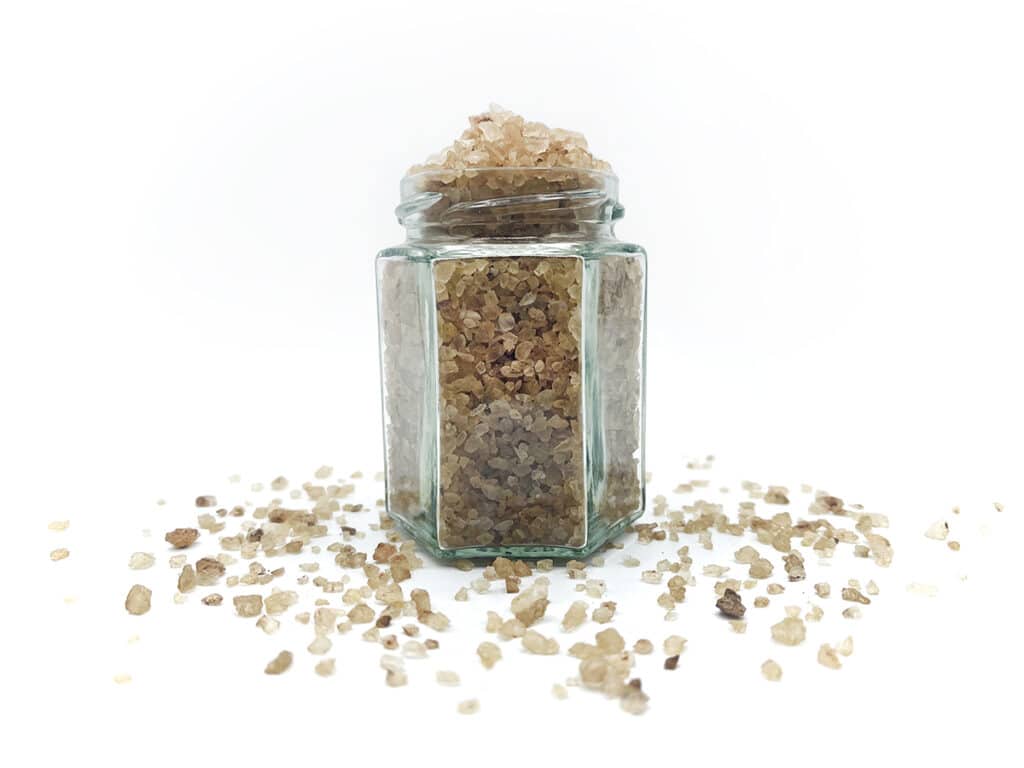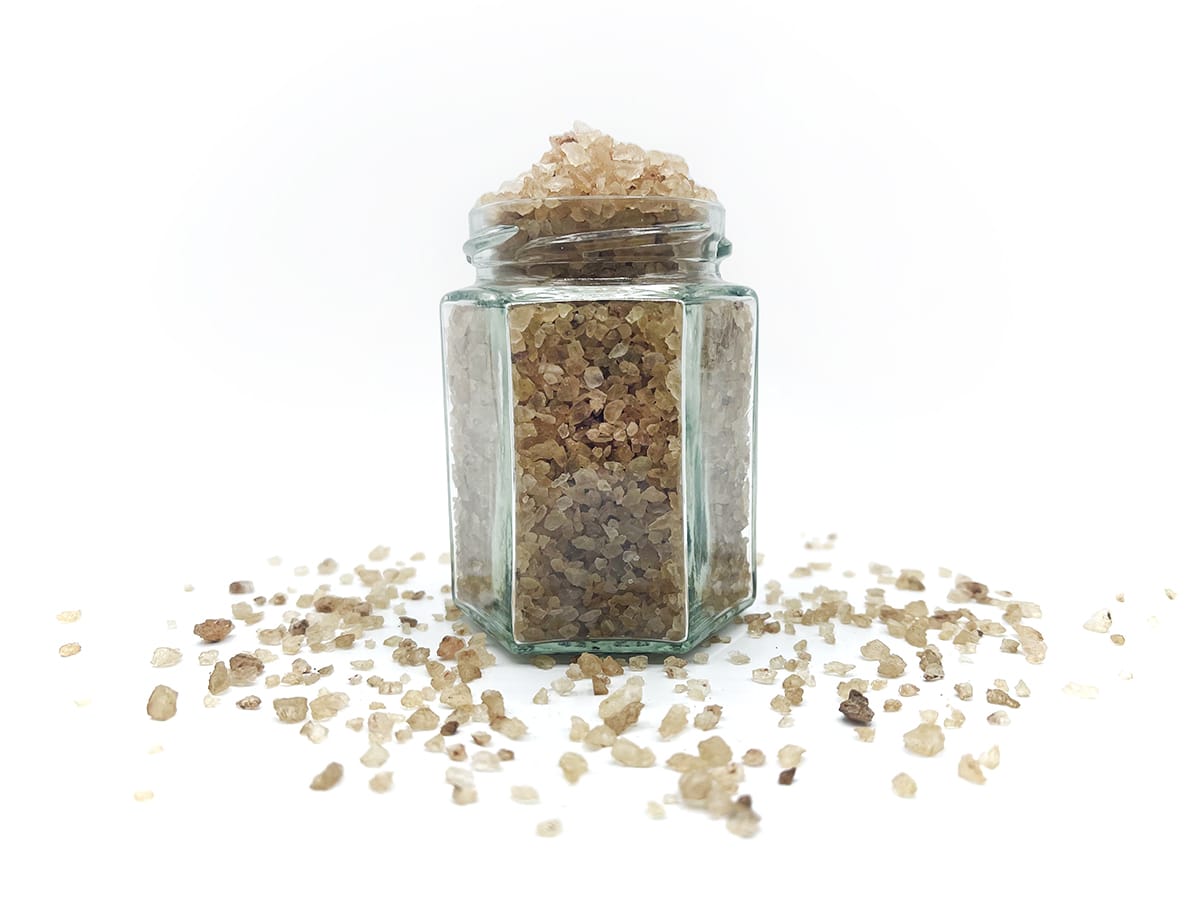Smoked finishing salts are a fun way to add a unique and flavorful touch to your dishes.
The main downside is the cost… smoked salts tend to be marketed as artisan products and can be pretty spendy. Fortunately, if you already have a grill or smoker, smoking your own salt at home is inexpensive and super simple!
Smoking vs grilling
Smoking involves slow-cooking food at relatively low temperatures (usually around 225-275°F) over a period of several hours up to several days. The smoke from burning wood or charcoal slowly infuses a smoky flavor as it cooks the food.
Grilling, on the other hand, involves cooking food over high heat (usually around 400-600°F) for a much shorter period of time. Grilling is typically done on a grill or BBQ, using gas, charcoal or wood as a fuel source.
The process of smoking salt is similar to that of smoking other foods. The smoke is circulated around the food by a fan or natural convection, allowing the salt crystals absorb the smoke particles and the resulting flavor compounds. The smoke infuses the salt granules, adding a lovely, distinctive smoky flavor to the salt.
What about carcinogens?
It’s true that there is evidence that consuming high amounts of smoked and grilled meats may increase the risk of certain types of cancer — specifically colorectal, pancreatic and prostate.
The high heat used in grilling can trigger chemical reactions in the meat proteins and create carcinogenic compounds called heterocyclic amines (HCAs) and polycyclic aromatic hydrocarbons (PAHs). Cooking directly over a flame and allowing the fat to drip onto hot coals or flames can also create carcinogenic compounds that get deposited onto the food.
There are ways to reduce the formation of HCAs and PAHs, such as marinating the meat in an acidic marinade and cooking at lower temperatures. Using indirect heat to cook is another way to minimize carcinogens by avoiding direct contact between the meat and flames. A grill that uses indirect heat (such as a Traeger) usually has a heat source that is offset from the grate where the food sits, so there’s no direct contact with the the flame to contribute to the formation of carcinogens.
Smoking itself is not a risk factor for cancer, but rather the chemicals that are produced when meat is smoked at high temperatures. Smoking at lower temperatures and smoking low-protein foods such as vegetables, cheese and SALT is generally considered safe.
What kind of BBQ?
Classic charcoal BBQs are a popular choice for smoking because they tend to be inexpensive and they produce a smoky flavor that’s difficult to achieve with other types of BBQs. The charcoal briquettes or lump charcoal can be combined with wood chips or chunks to create smoke.
Gas BBQs can also be used for smoking, although they don’t provide the same smoky flavor as charcoal or wood-fired BBQs. To smoke in a gas BBQ, you’ll need something like a smoker box, a smoker tube or a smoking pouch filled with wood chips or pellets, which will produce smoke while the gas grill cooks the food.
You can also buy purpose-built smokers designed specifically for smoking food. They typically work with an electric or gas fueled heating element that generates smoke from heated wood, charcoal or pellets and maintains a consistent temperature for long periods of time. (This is what we have — a propane fueled ‘Smoke Vault’ smoker that heats a tray of wood chunks/chips beneath a tray of water to create smoke. It’s been a great little smoker the past three years; we’ve been very happy with the purchase.)
Salt smoking equipment
When salt is smoked, the salt crystals are exposed to smoke compounds such as phenols, aldehydes and ketones that adhere to the surface of the salt granules and penetrate the salt crystals.
It’s really, really easy to smoke salt. Honestly, the most challenging part for me was finding an appropriate tray to hold my salt inside the smoker…
Why can’t you just use something like a jelly roll pan? Well, technically you could, but using a mesh tray allows the smoke to pass through and circulate around the salt, ensuring that every crystal is evenly smoked and flavored. A jelly roll pan with no mesh or holes can result in unevenly smoked salt with some of your salt getting too much smoke flavor and others getting too little. If you go with a regular pan, it’s not a bad idea to check on the salt every so often and stir it around a bit.
I’ve used these stainless colander trays before and, while they do work, the holes are about 3mm each, so it’s only suitable for very coarse salt. It held my coarse Real Salt reasonably well, and only the smallest particles fell through the holes. (I just collected the spillage on a silicone mat and added it to my salt jar — no biggie.)
After a bit of trial and error, I finally found exactly what I was looking for in these industrial stainless flour sifters. I went with the 14″ diameter tray with the 0.4mm mesh, but they come in a variety of diameters from 8″ to 16.5″ to fit your smoker set up. The trays even stack if you want to get more than one of the same size and stack them in the smoker.
Perfect!
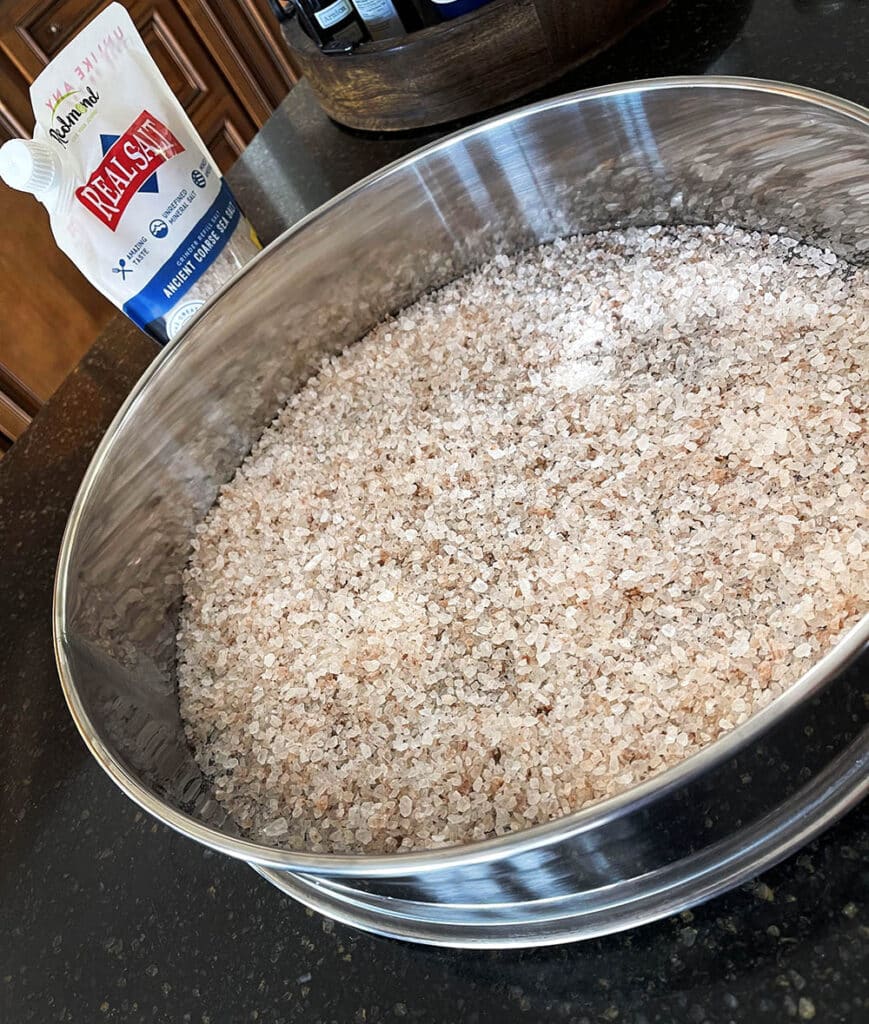
For a more DIY solution, there’s a nifty looking tutorial over at the Trillium Arts blog for a fine mesh salt smoking basket made from inexpensive stainless steel mesh filter material. You will need a way to secure the sides of the basket, and the author recommends a hand rivet, so you may need special equipment.
Which wood?
There are many different types of wood that can be used for smoking salt, each with its own unique flavor profile. Ultimately, the choice of wood will depend on personal preference and the flavor profile you want to achieve. Mesquite, hickory and oak will impart a stronger, more robust smoke flavor to the salt, while fruit woods like apple and cherry will produce a sweeter, more delicate flavor.
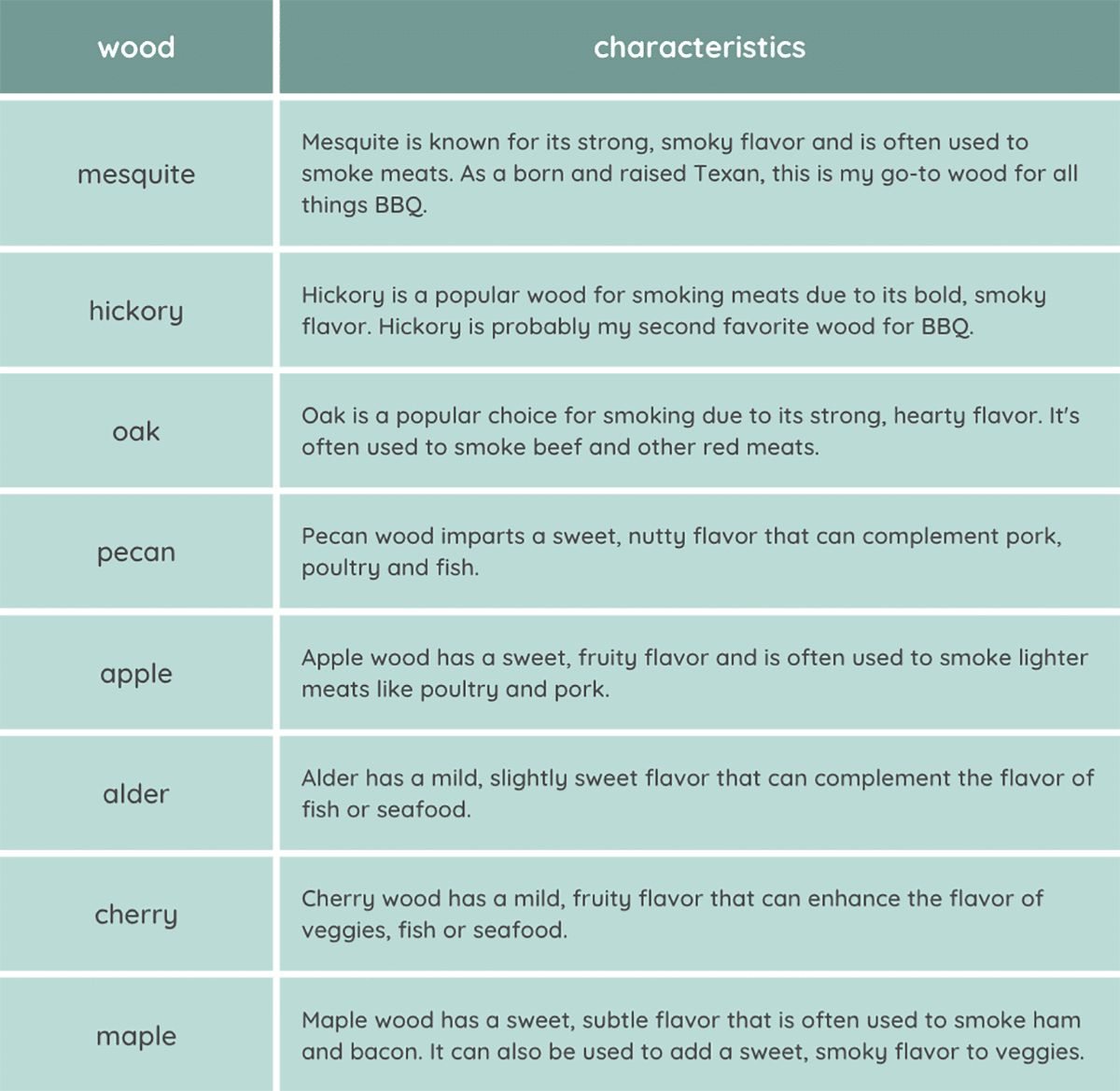
Pick your favorite of have fun mixing them up for your own unique, signature smoke profile!
Which salt?
You can smoke pretty much any salt you like — sea or Himalayan, coarse, rock or flaked/kosher — but choose a coarser, chunkier salt over a fine one. Coarser salt crystals do a great job of absorbing smoke flavor and are more resistant to breaking down during the smoking process. Finer salts are also more prone to clumping, potentially leading to an uneven distribution of smoke flavor.
Coarse salts are also more versatile than fine, since you can choose to use them as is or grind them smaller. I love a coarse finishing salt for its distinctive texture, crunch and visual appeal. The larger crystals of coarse salt dissolve more slowly, allowing for a slower release of saltiness and a more gradual flavor development.
Of course, if you prefer a finer grind, you can also opt to put a course salt into a salt grinder.
Smoke'n
To maximize effort and fuel costs, I try to smoke salt at the same time I’m also smoking something else — tri tip and jalapeños or smoked salmon are common at my house. The tray of salt goes on the top shelf and everything else goes on the grates below. If your BBQ setup doesn’t allow you to comfortably separate the salt from the other things you’d be smoking, then go ahead and smoke the salt by itself. You don’t want anything getting contaminated!
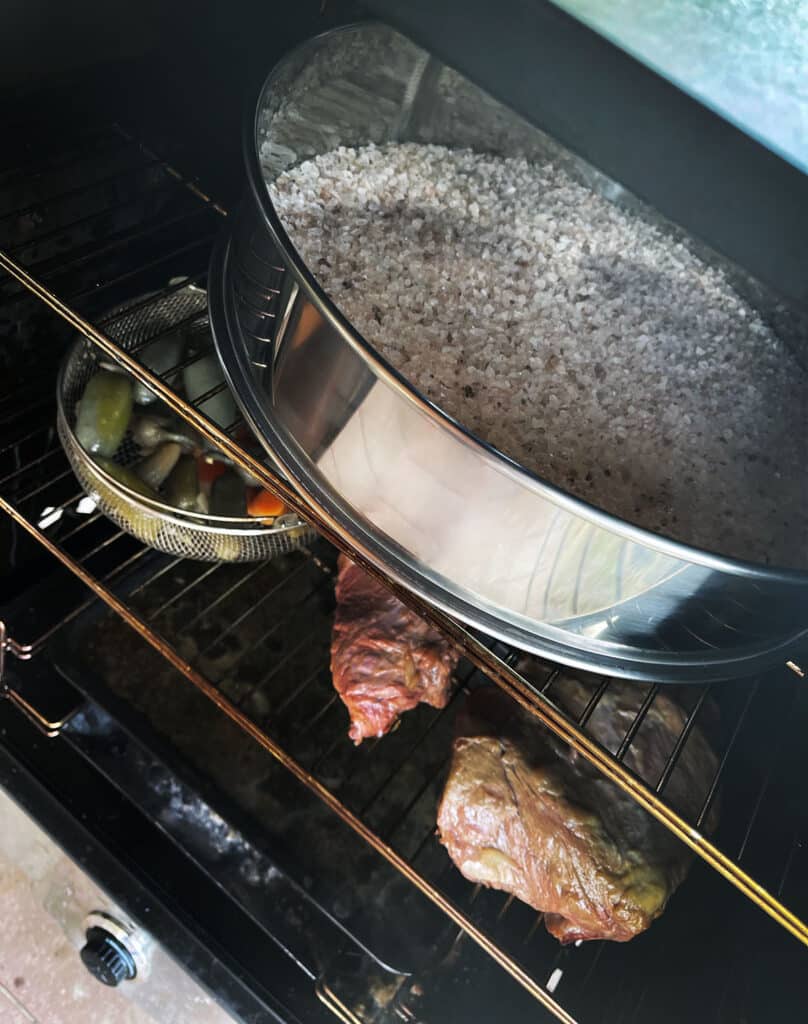
Spread your salt in a thin, even layer on your heat-proof tray and place on the grate of your smoker or BBQ. The length of time for smoking salt can vary depending on the type of smoker and the desired level of smokiness, but I generally aim for around 4 hours at 200-250°F. I would recommend a conservative smoke time the first time you try it, since you can always smoke the salt a bit more, but over-smoking can result in an unpleasant bitterness. Experiment until you reach a smokiness level that suits your taste buds.
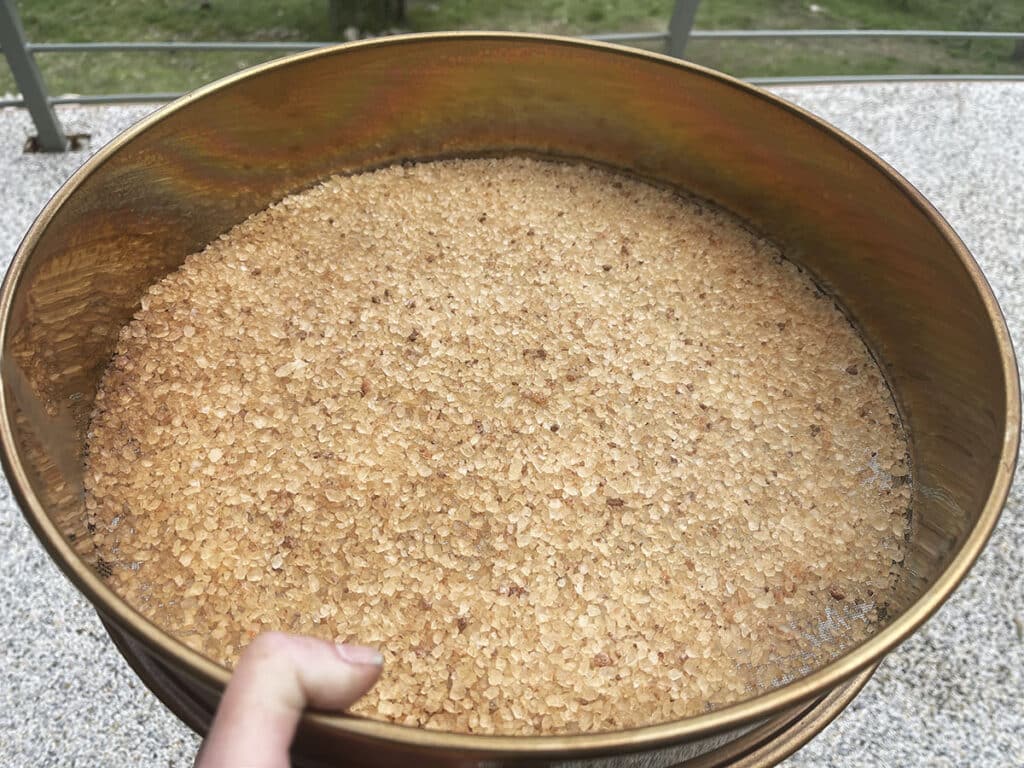
Homemade smoked salt makes a wonderful gift! I like to save unique, and interesting shaped jars for just such an occasion…
Once you’re comfortable smoking salt, you can expand your portfolio to include other spices. Home smoked black peppercorns, minced garlic and red pepper flakes are on my shortlist of spices of try next ♥
